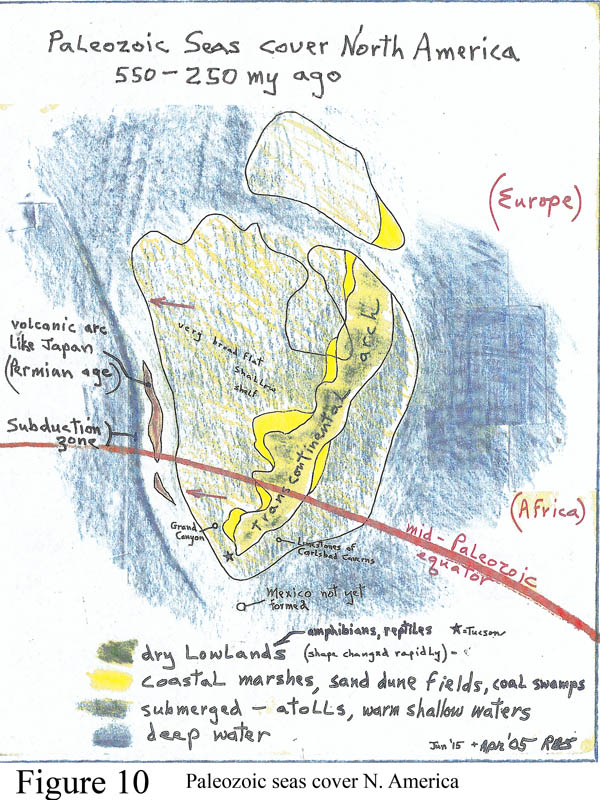The Phanerozoic Eon is divided into three great eras - Paleozoic, Mesozoic and Cenozoic Eras. Most geological books and articles concentrate upon this last 10% of Earth history because the record is the most fresh and abundant. During the Paleozoic Era multitudes of life arose and died; Mesozoic time was the age of the dinosaurs, and Cenozoic time is the age of mammals. But these life adventures are set upon lands that have undergone extreme and diverse rearrangements.
Figure 10 shows a general state of affairs for Paleozoic time in North America, 550 - 250 m.y. ago. In general, Arizona was super-flat and near to sea level, during which time much of the continent sank and became flooded three times. The black star is Tucson. North America's east coast was undergoing major collisions with Europe-Africa and the mighty Appalachians were formed, the size of the modern Himalayas (not shown as such, the drawing shows the land before the collision). The western backwaters became covered over by the Paleozoic series during this 300 m.y. of time, seen so well in the Grand Canyon as all of the upper flat layers. The transcontinental arch lowland (labeled), above sea level, provided streams and sands as sources for river deltas and coastal sand dune beds. The Paleozoic sediment series covered basically all of Arizona and averages some 4,000 feet in thickness. To our west and north the beds become much thicker, as in central Nevada where they represent deeper-water continental slope of the Pacific Ocean. For a time Tucson sat at the equator as North America slowly drifted northward. Paleozoic layers consist of limestones deposited offshore as reefs and in large lagoons with extensive salt and gypsum layers, mixed with river floodplain and delta deposits (same environment as the Mississippi River delta), and wind-blown coastal dune sandstones.
